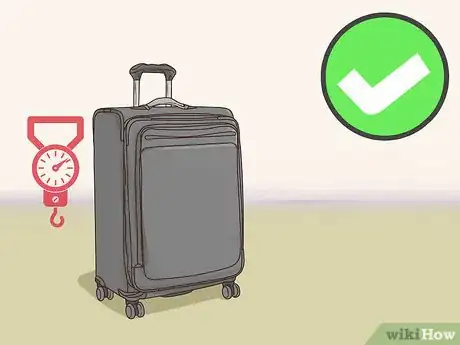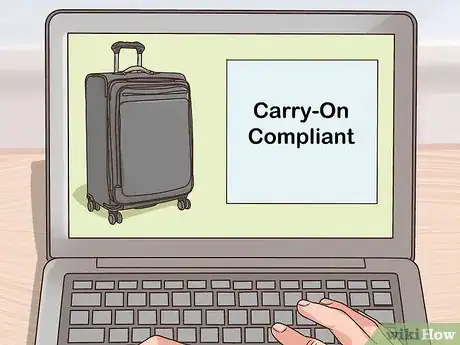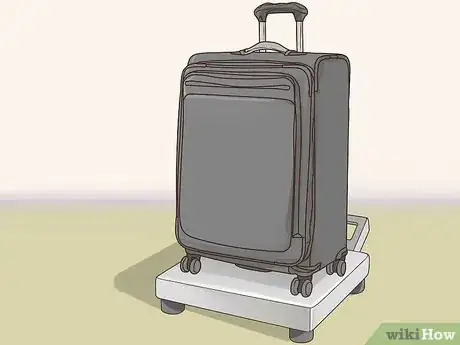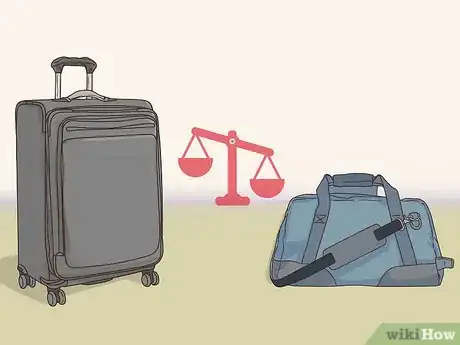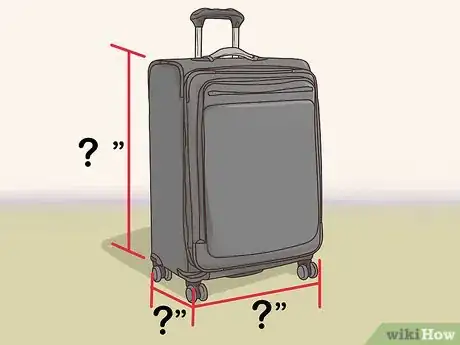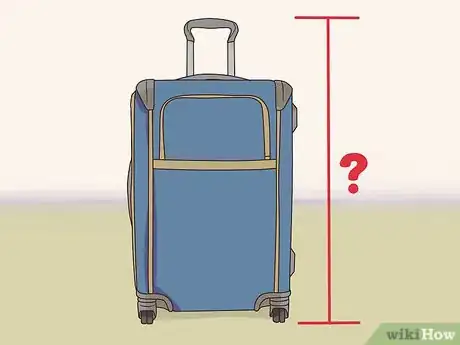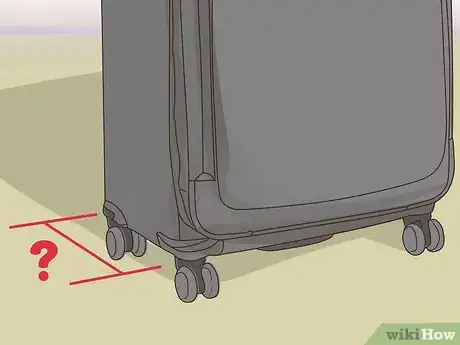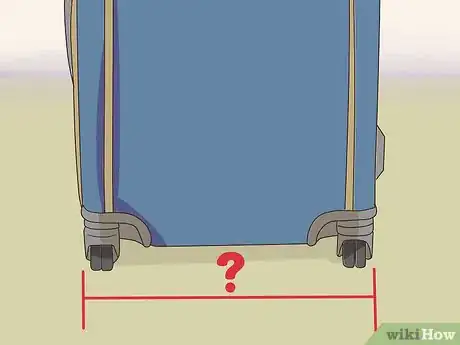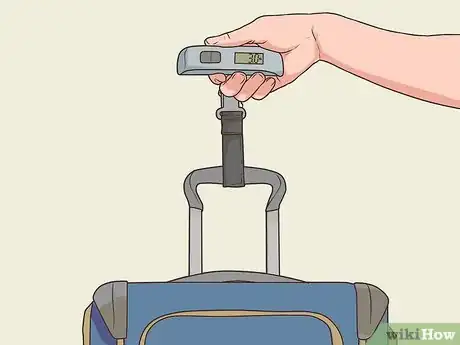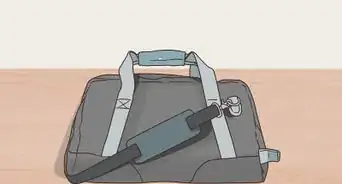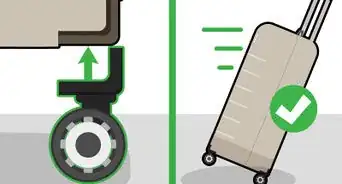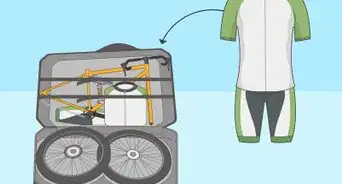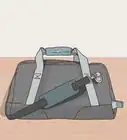This article was co-authored by Amy Tan. Amy Tan is a Travel Planner and the Founder of Planet Hoppers, a boutique travel design team founded in 2002. Planet Hoppers specializes in brainstorming and creating itineraries for dream vacations, honeymoons, exotic adventures, family reunions, and group trips. Planet Hoppers is a TRUE accredited travel agency and a member of the Signature Travel Network, the Cruise Lines International Association (CLIA), and Travel Leaders. Amy earned a BA in Communications and a BS in Physics from the University of California, Davis in 2000.
This article has been viewed 330,586 times.
If you’re taking a flight somewhere, chances are you’ll need to bring some luggage along. Since airlines have requirements for the size and weight of the luggage you can bring on the plane, you'll need to measure your luggage correctly. Start by making sure you know what you’re getting when you purchase a new bag. Then take the most common measurements, including linear inches, weight, and height, depth, and width. Taking these measurements ahead of time can save you a headache at the airport.
Steps
Selecting the Right Bag
-
1Check your airline’s bag requirements. Each airline has slightly different requirements for checked and carry-on baggage.[1] You should be able to find that information on your airline’s website, usually under "Frequently Asked Questions."
- Keep in mind that the airline’s website will have the most up-to-date information.
-
2Make sure bag extensions are within the size requirements. Some bags have a little zipper around the edge that doesn’t open into a new section, but instead extends your bag. If you think you’ll need to use this extension, make sure you measure your bag with it unzipped and extended.[2]Advertisement
-
3Double-check the measurements retailers list on their websites. A lot of luggage retailers will advertise that their bags are “carry-on compliant.” They’ll also list measurements that seem to fit with most airlines’ carry-on size requirements. But always measure the bag on your own before you pack it and take it to the airport. Different airlines have different requirements, and retailers don’t always have accurate measurements.[3]
-
4Measure your bag once it's been packed. Your bag might fit within the airline's requirements when it's empty, but adding your stuff to it can change the dimensions. Pack everything you need to take and then re-measure it.
-
5Compare carry-on and checked bag measurements. Most airlines allow you to bring a larger bag if you're checking it. Make sure you know if you're carrying on a bag or checking it, and that you have your airline's measurement requirements for the type of bag that you've chosen.
- Most airlines have strict weight requirements for checked luggage. Make sure you weigh your bag, after it's fully packed, to make sure it's within those requirements.
Taking Measurements
-
1Measure the total linear inches of your bag. Because bags can be so many different shapes and sizes, some airlines just give a linear inch or centimeter measurement your bag needs to be under. Measure the length, height, and depth of your bag, including handles and wheels. Add those three measurements together. The total is your linear measurement, in either centimeters or inches.[4]
-
2Measure from the wheels to the top of the handle for height. Some retailers list height as the “upright” measurement. To get the height of your bag, measure from bottom of the wheels (if your bag has wheels) to the top of your handle.[5]
- If you’re using a duffle bag, stand it on its end and measure from one end to the other.
-
3Measure from the back of your suitcase to the front for depth. The depth refers to how deep your suitcase is. So for depth you need to measure from the back of your suitcase (where your clothes rest when you’re packing) to the front (which usually has extra zip and slip pockets).
-
4Measure from one edge to another for width. To take your luggage’s width measurement, you’ll need to situate it so you’re facing your luggage straight on. Then measure across the front of your bag. Make sure you include any side handles in your measurements.
-
5Weigh your bag with a scale. Each airline has a weight limit for carry-on and checked luggage. Take into consideration that your bag will weigh something, even when empty. If you have a scale at home, weigh your bag after it’s fully packed. It can help you avoid nasty fees or having to throw stuff out at the airport.[6]
Community Q&A
-
QuestionWhy must I include the length of the retractable handle?
 Community AnswerRetract the handle. You should only have to measure any part that doesn't totally retract and/or any extra height added by a closed flap or zipper cover.
Community AnswerRetract the handle. You should only have to measure any part that doesn't totally retract and/or any extra height added by a closed flap or zipper cover. -
QuestionWhat is the carton size for traveling on a plane?
 Community AnswerThe carton sizes and weights are according to your airline and distance. Before going on a flight, check luggage allowances from your airline's website or contact them directly.
Community AnswerThe carton sizes and weights are according to your airline and distance. Before going on a flight, check luggage allowances from your airline's website or contact them directly. -
QuestionCan trucking bags be taken as hand baggage?
 Community AnswerYes and no. Yes, if it meets the TSA size requirement (go to the home website) then yes. I recommend not bringing the big ones, especially if you want to hold it as a hand bag because there is a high possibility they won't let you.
Community AnswerYes and no. Yes, if it meets the TSA size requirement (go to the home website) then yes. I recommend not bringing the big ones, especially if you want to hold it as a hand bag because there is a high possibility they won't let you.
References
- ↑ Amy Tan. Travel Planner & Founder, Planet Hoppers. Expert Interview. 12 March 2020.
- ↑ https://www.overstock.com/guides/how-to-choose-luggage-sizes-when-flying
- ↑ https://www.consumerreports.org/luggage/When-carry-on-luggage-isnt-carry-on-size/
- ↑ https://www.overstock.com/guides/how-to-choose-luggage-sizes-when-flying
- ↑ https://www.overstock.com/guides/how-to-choose-luggage-sizes-when-flying
- ↑ https://www.overstock.com/guides/how-to-choose-luggage-sizes-when-flying
About This Article
To measure luggage, start by standing the bag upright, retracting any handles, and measuring from the bottom of the wheels to the top of the suitcase to determine the length. Next, calculate the depth by measuring from the back to the front of the suitcase, taking into account any zipper compartments that might bulge out. Finally, measure from 1 outer edge to another to find the width. Once you have these 3 numbers, add them together to get the linear measurement. Also, weigh your bag when it's fully packed to make sure it fits airline guidelines. To learn how to select the best bag for air travel, keep reading!


